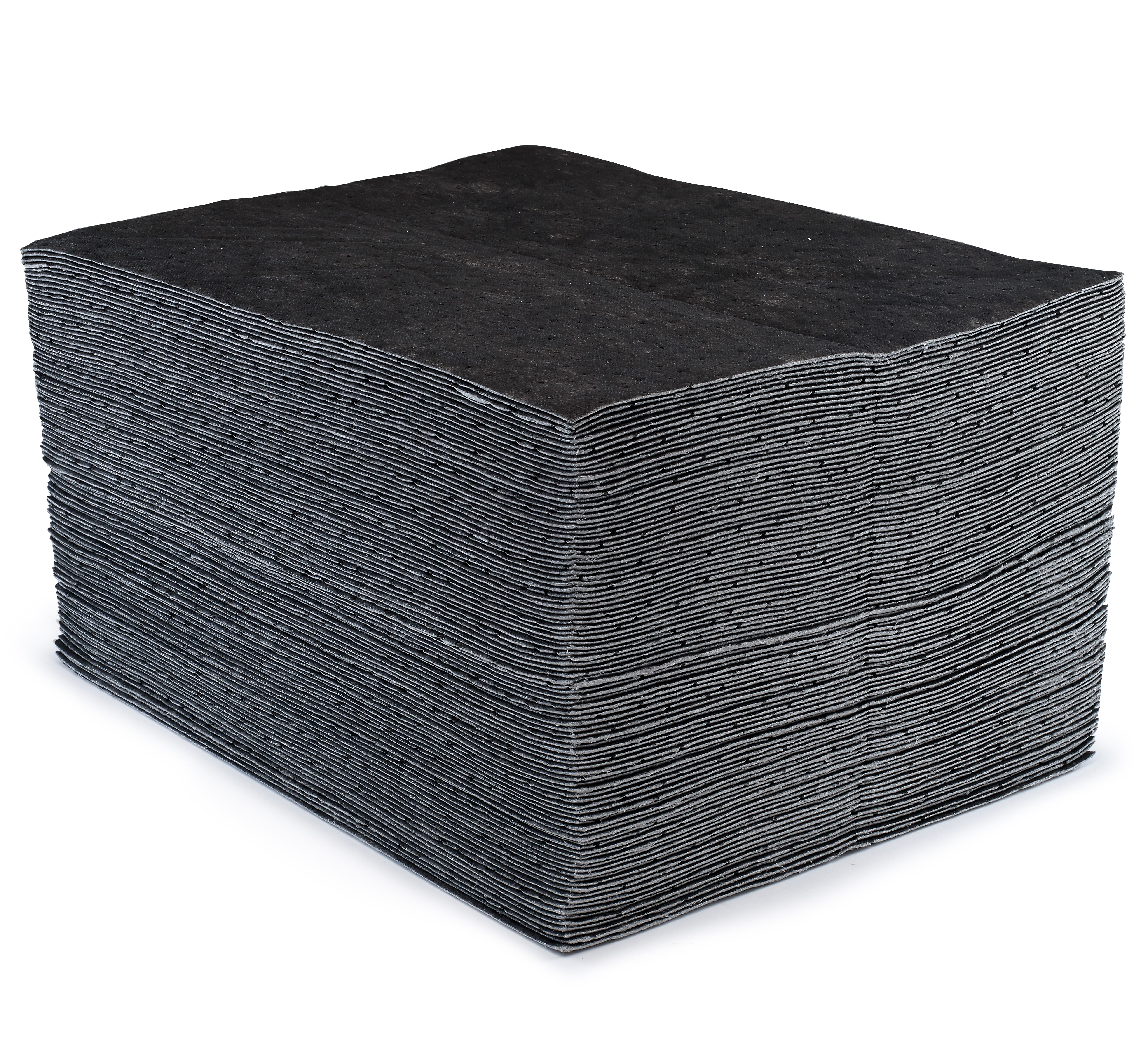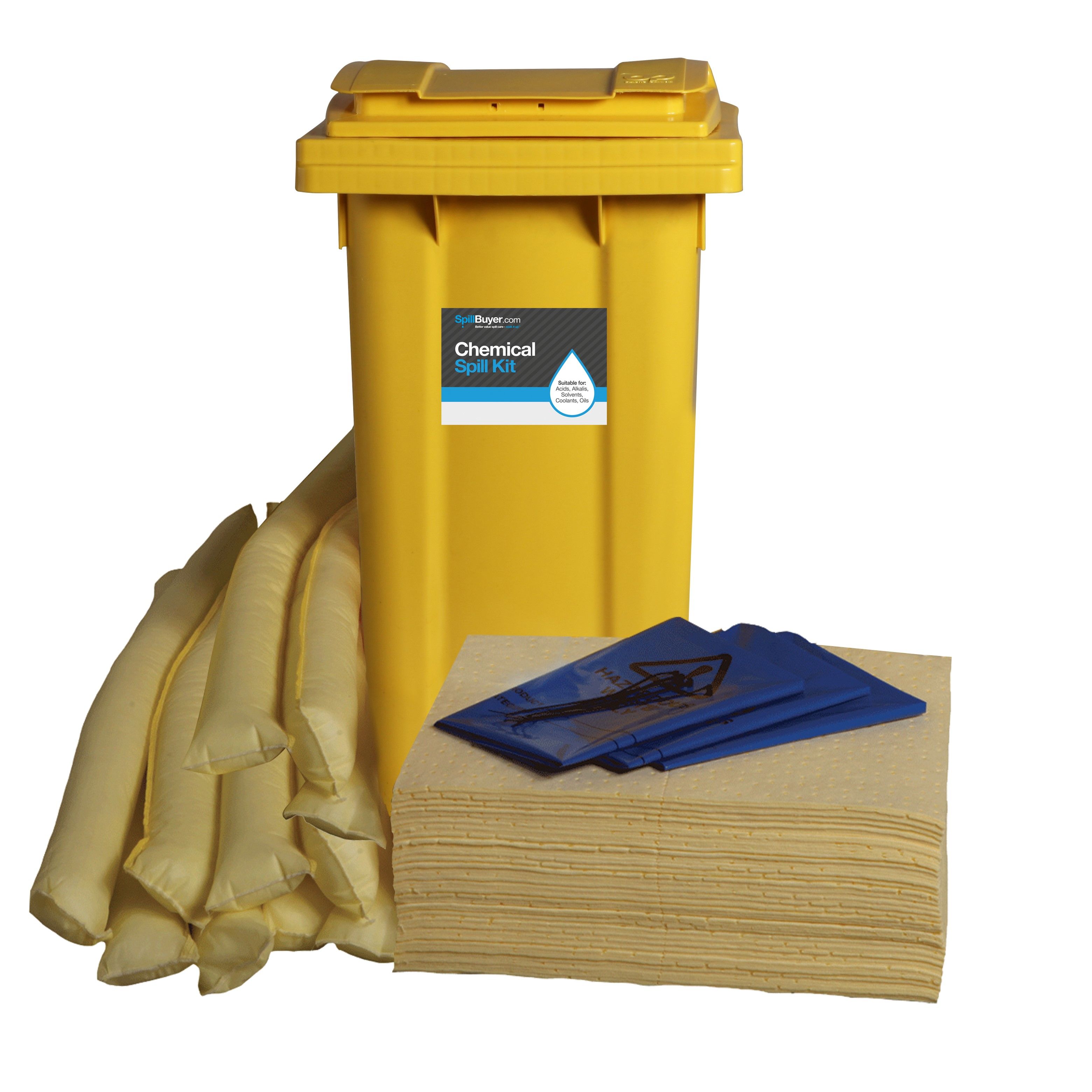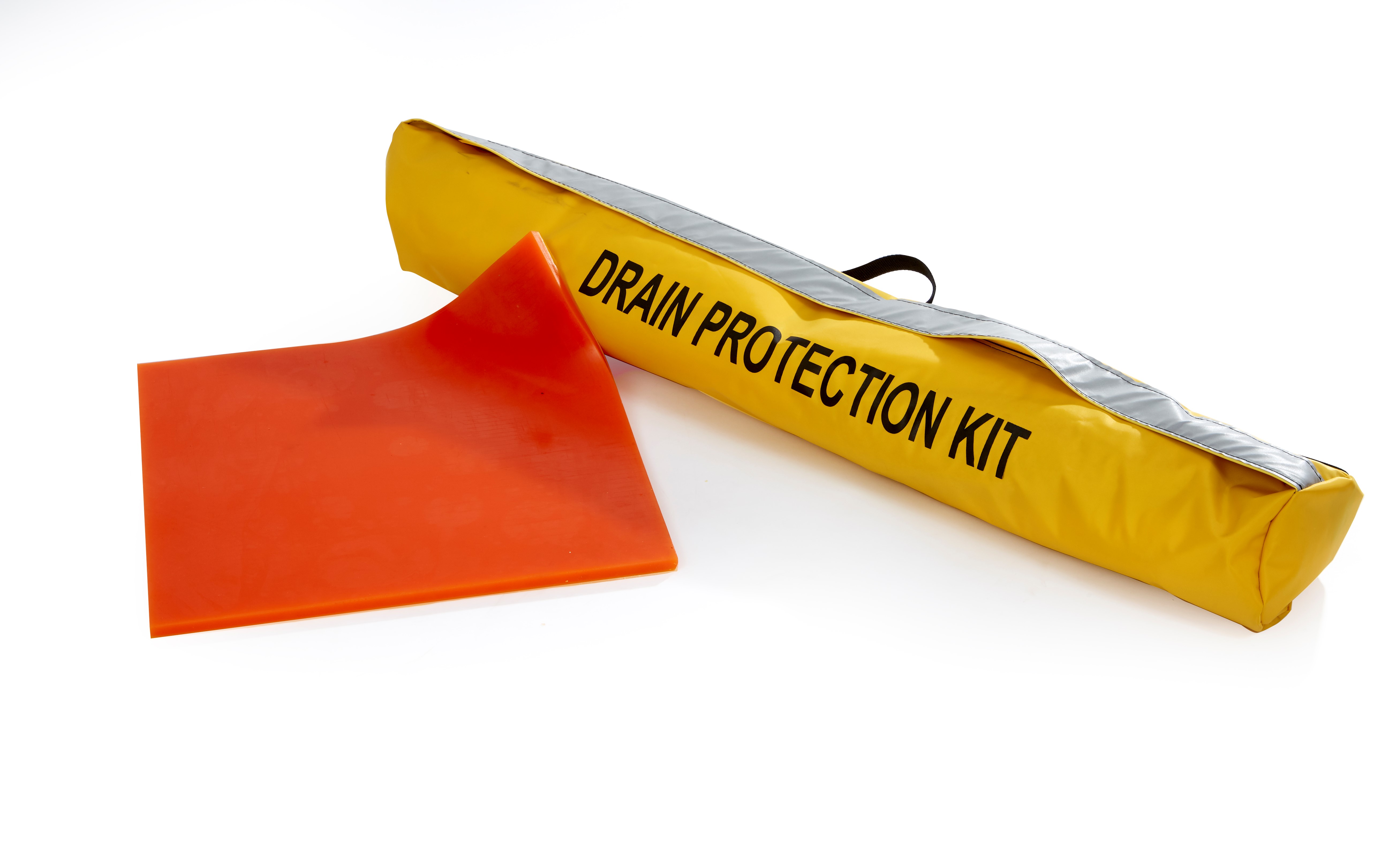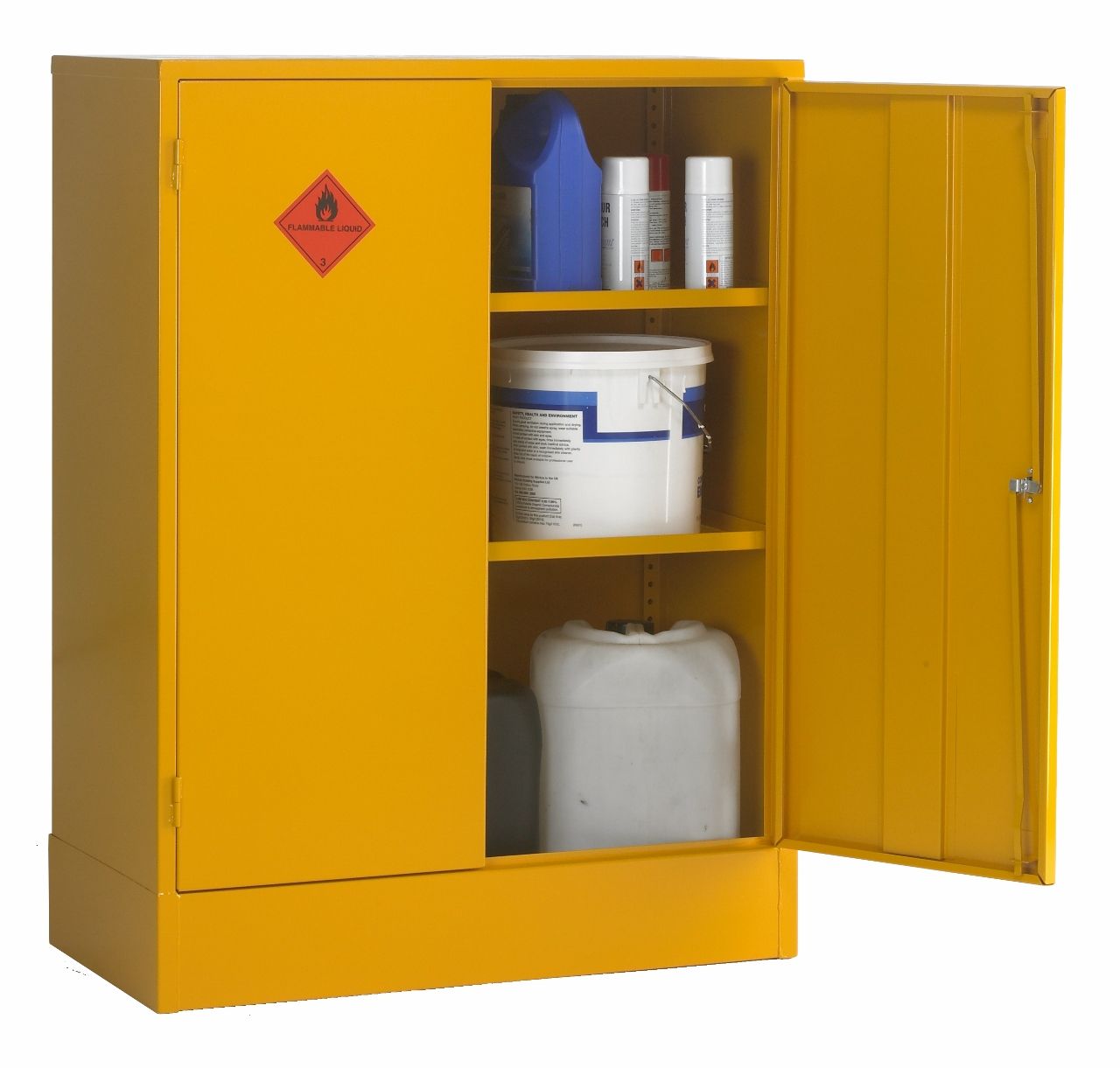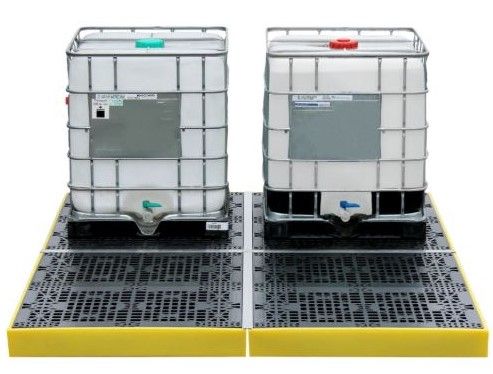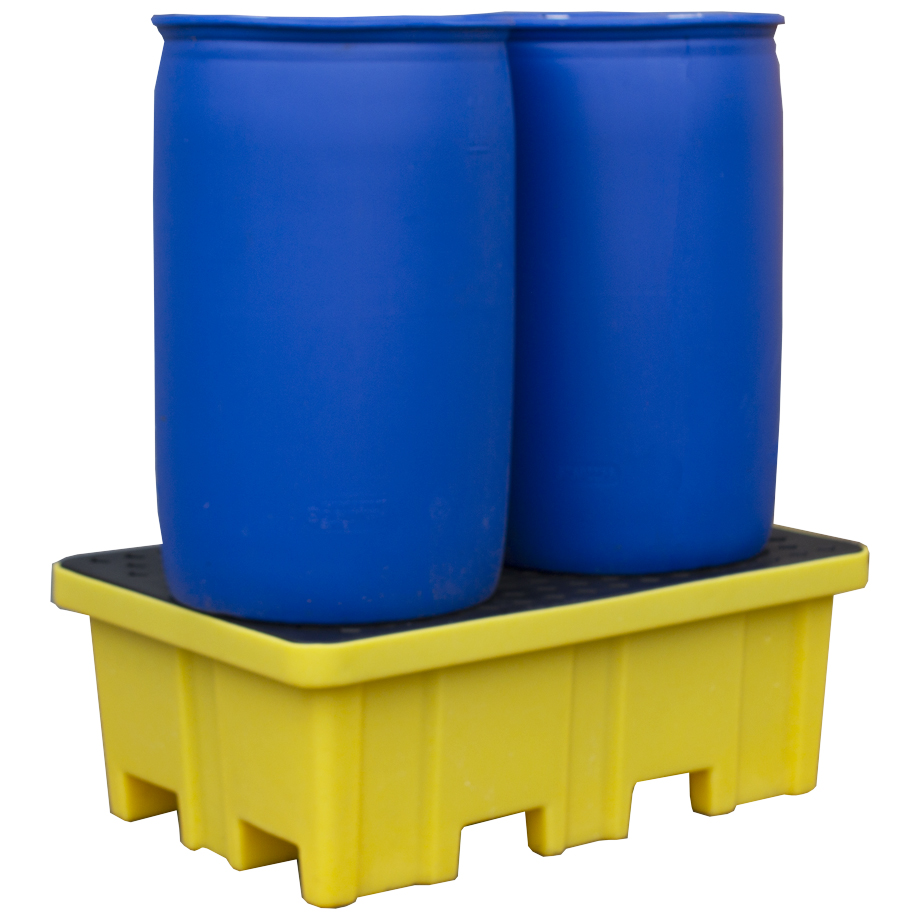For employers and those responsible for on-site safety, a crucial consideration for manufacturing operations is to protect the health of employees and those on-site is by using hazardous storage cabinets. Adequate storagenot only protects against potential hazards but also plays a vital role in meeting regulatory requirements.
Below, the occupational safety experts at SafetyBuyer outline the importance of using appropriate hazardous storage cabinets to lessen the risk posed by substances hazardous to health, and how decision-makers in the manufacturing industry can increase the level of safety for their operations.
Understanding hazardous storage cabinets
Hazardous storage cabinets, also known as hazardous substance cupboards, are indispensable in various industries for securely storing hazardous materials, safeguarding personnel, and the environment. They come in various types, shapes and sizes, including chemical storage cabinets for flammable liquids, corrosive substances, and pesticides or toxic substances.
These cabinets are designed with safety in mind. In most, you will find a two-point locking system for enhanced security when storing potentially hazardous substances as standard, but there are many variations within the build of the cabinets, each of which will be more appropriate than others when considering your specific manufacturing operations.
Key components of hazardous storage cabinets
Hazardous substance cabinets are easily recognised by their yellow exteriors, but there are discrepancies once you look closer. Essential elements of hazardous storage cabinets include leak-proof sumps, ventilation, and secure locking mechanisms to guarantee the safe containment of hazardous substances. The base or sump of the cabinet is the most essential element to consider when selecting a hazardous storage cabinet - it is the last line of defence should there be a spill of a hazardous substance It should be constructed to be leak-proof and capable of containing any hazardous substances that may be spilled.
COSHH cabinets, on the other hand, are grey - but are also specifically designed to contain hazardous materials. Not all COSHH cabinets are the same either; some have airtight properties to stop any materials from being released into the external environment. Some have ventilation systems to keep a safe flow circulated. This reduces the chances of an employee or person on-site coming in contact with hazardous substances.
Secure locking mechanisms are critical for hazardous storage cabinets to guarantee that hazardous substances are properly contained and not accessed by unauthorised individuals.
Whichever hazardous substance you use on-site, you should find the most appropriate cabinet for your needs. Take a look at our helpful video to get you started:
Material compatibility and cabinet selection
Material compatibility is the ability of various materials to interact without causing any negative effects, such as corrosion, rust, or discolouration, when subjected to contact with one another or with chemicals. It is essential to consider material compatibility when selecting hazardous storage cabinets to ensure safety and efficiency in manufacturing processes.
When selecting a hazardous storage cabinet, it is essential to evaluate your storage requirements and weigh the size and style of the cabinet that will best accommodate those needs. Additionally, customisation options are available to ensure the cabinet is tailored to your specific requirements.
Types of hazardous storage cabinets
Different types of hazardous storage cabinets cater to specific needs, such as flammable liquids, corrosive substances, and pesticides or toxic substances. SafetyBuyer offers hazardous chests, cabinets, mobile and wall units, COSHH cabinets, flammable liquid cupboards, acid and alkali cabinets, and COSHH cupboards.
The primary purpose of hazardous substance cabinets is to ensure the safe storage of hazardous substances, including harmful substances.
Flammable liquid cabinets
Flammable liquid cabinets are utilised for the secure storage of flammable materials. The Armorgard range offers superior quality thanks to its fire resistance. Flammable storage cabinets are equipped with adjustable spill-retaining shelves and an integral sump to ensure the containment of any flammable liquid spills.
Choosing the right size and style
Selecting the correct size and style of these cabinets, based on the types and quantities of materials being stored, is pivotal to operational safety and productivity. Properly sized cabinets optimize space, mitigate risks of mishandling substances, and improve overall efficiency, while the appropriate style ensures inherent risks of materials are effectively managed.
Furthermore, compatibility between the cabinet's material and stored chemicals is essential to prevent degradation, reactions, or leaks that could risk worker safety and the environment. Considerations for packaging types and the need for ventilation or fume hoods also contribute to a safer, cleaner, and more efficient working environment. In essence, through the careful selection of hazardous storage cabinets, manufacturing facilities can uphold safety regulations, reduce potential risks, and enhance operational efficiency, demonstrating their importance to the manufacturing process.
Assessing your storage needs
When evaluating storage requirements for hazardous materials, it is essential to consider potential hazards, risks, substance properties, quantities, storage methods, and environmental impact. The amount of hazardous materials to be stored should be evaluated according to the associated hazards, risks, and characteristics of the substance.
In addition to assessing the types and quantities of hazardous materials to be stored, it is also important to consider the available space in your facility. This will help ensure that the hazardous storage cabinet you choose is the right size and style for your specific needs, minimising potential risks and maximising safety.
Customisation options
Hazardous storage cabinets can be customised in terms of size, colour, and material, and can be tailored to meet specific requirements of the site. Adjustable shelving offers the flexibility of accommodating various sizes of containers, enabling it to be tailored to the requirements of the space.
Ventilation systems are intended to mitigate the risk of fire and explosion by ensuring sufficient air circulation and ventilation. A range of locking mechanisms are available to ensure the safety of hazardous materials and restrict unauthorised access.
By selecting the right customisation options, you can ensure that your hazardous storage cabinet meets your specific requirements and provides the highest level of safety and compliance.
Proper use and maintenance of hazardous storage cabinets
Correct use and maintenance of hazardous storage cabinets are crucial in enhancing safety, compliance, and operational efficiency in manufacturing settings.
Safe handling and storage procedures
It is essential to adhere to regulations, guidelines, and best practices for managing hazardous materials in the workplace in order to ensure safe handling and storage procedures within the hazardous storage range. The maximum capacity for a single storage cabinet is 60 gallons of Category 1, 2 or 3 flammable liquids, or 120 gallons of Category 4 flammable liquids, as specified by applicable regulations.
Hazardous storage cabinets must comply with OSHA fire cabinet regulations. The cabinets must be constructed with double-walls and 112-inch airspace, and the joints must be securely fastened through riveting, welding, or a combination of both. All hazardous chemicals must be labelled, sealed and stored correctly in designated cabinets.
Regular inspections and cleaning
Regular inspections and cleaning of hazardous storage cabinets are necessary to maintain their safety and effectiveness, thereby adhering to regulations and minimising risks. Hazardous substance cabinets for the storage of flammable liquids should be thoroughly inspected on an annual basis to ensure proper functioning and safety. Additionally, safety cabinets should be inspected weekly to identify any potential issues before they can impact the safety of the cabinet.
In the event of a spill, it should be cleaned immediately with mild soap, taking into account the chemical hazards present. Consulting the chemical’s Safety Data Sheet (SDS) for guidance on cleaning is essential to guarantee that the cleaning procedure is secure and efficient.
Compliance with UK and European Regulations
Compliance with UK and European regulations is crucial for manufacturers handling hazardous materials, and hazardous storage cabinets play a key role in meeting these requirements. For example, COSHH cabinets are utilised for the safe storage and management of hazardous materials or cleaning products and are designed to contain potentially hazardous materials and mitigate associated risks.
Understanding legal requirements
Understanding legal requirements for hazardous material storage involves familiarising yourself with relevant regulations, such as COSHH, DSD, and DPD directives. COSHH stands for Control of Substances Hazardous to Health, and COSHH regulations ensure the health and safety of workers by controlling dangerous substances, including those hazardous to health.
COSHH cabinets are a common feature in many different working environments, including that of manufacturing. Additional information regarding COSHH can be found on the Health and Safety Executive website.
Ensuring compliance with hazardous storage cabinets
Ensuring compliance with hazardous storage cabinets involves selecting the appropriate cabinet type, size, and features, as well as following proper use and maintenance procedures. To ensure compliance with hazardous storage cabinets, it is essential to adhere to regulations.
By selecting the right cabinet and adhering to the appropriate use and maintenance procedures, you can ensure that your hazardous storage cabinets are compliant with regulations and provide the highest level of safety and compliance.
Hazardous storage cabinets play a crucial role in ensuring the safety and compliance of manufacturing operations that handle hazardous materials. By understanding the different types of cabinets, their key components, and the regulations governing their use, businesses can select the right size and style of cabinet for their needs. Proper use and maintenance of these cabinets, combined with compliance with UK regulations, will help protect employees, the environment, and the business itself.
SafetyBuyer offers a wide range of hazardous storage cabinets to suit all workplace requirements. If you have any questions, do not hesitate to get in touch with us on 0800 043 0161, or email us at sales@safetybuyer.com.
 Over 12,000
Over 12,000  Simple no quibble
Simple no quibble  Prompt dispatch &
Prompt dispatch &  UK Mainland Delivery
UK Mainland Delivery 





